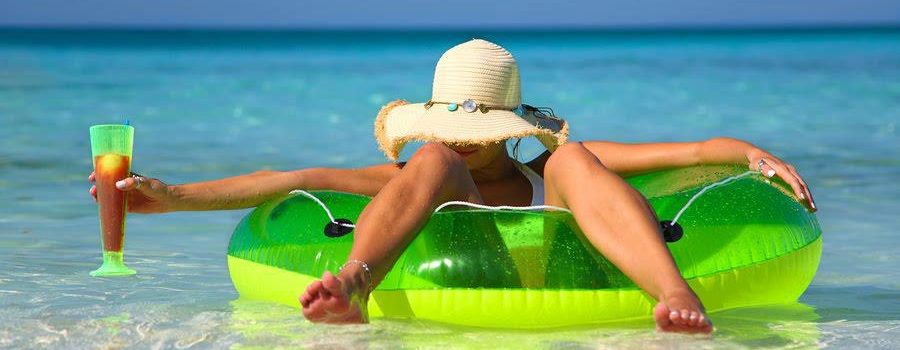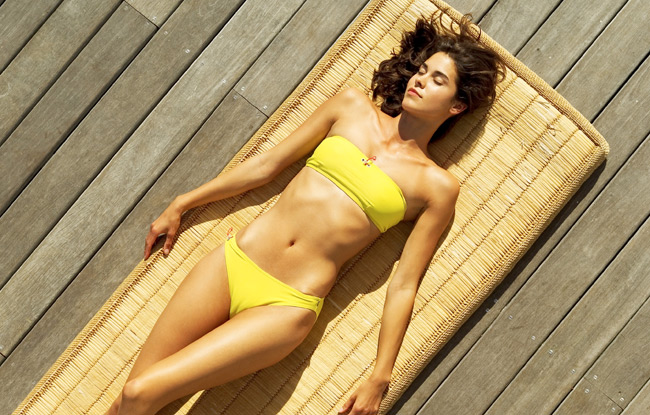
Factors that Destroy the Skin Cells (Part B)
The Sun- Damage of the Sun on the Skin
If choosing your sun block with unique criteria of getting a nice tan the fastest, without getting burned, you are in danger of getting prematurely aged skin. You increase the chances of being insulted by skin cancer, cataract, or disturb your immune system.
The strategy to maintaining skin health and youthfulness should start from appropriate sun protection; for the face to say the least.
 The sun is harmful to the skin, because when the external epidermis can not block it’s rays, they insult the very core of basic cores, impairing to the genetic prototype, resulting to the automatic division of the cells where the should be reproducing in perfection. Undoubtedly, a small change in the genetic prototype won’t be leaving visible signs. Exposing our selves for a limited time period under the sun. Exposing ourselves for a limited time period under the sun is totally ok and acceptable, but intense tanning only increases this cell division in an increasingly defective way resulting in the multiplication of damage onto the skin to a visible outcome.
The sun is harmful to the skin, because when the external epidermis can not block it’s rays, they insult the very core of basic cores, impairing to the genetic prototype, resulting to the automatic division of the cells where the should be reproducing in perfection. Undoubtedly, a small change in the genetic prototype won’t be leaving visible signs. Exposing our selves for a limited time period under the sun. Exposing ourselves for a limited time period under the sun is totally ok and acceptable, but intense tanning only increases this cell division in an increasingly defective way resulting in the multiplication of damage onto the skin to a visible outcome.
All ultraviolet light rays (otherwise known UV light), can result to skin harm. We would only distinguish between type B (UVB), considered responsible for skin burns, and type A (UVA) which have been overseen, considered good for tanning. For this reason UVB have been banned from tanning lamps, not forgetting that tanning creams were made only to protect from these. Although sun burns warn us with the pain and tanning doesn’t both ray types (UVB and UVA) destroy the skin and the only tan protector creams that truly protect, are those protecting from both types.
UVA rays are present from sunrise to sunset as oppose to the UVB, which are partly absorbed by the atmosphere. The the direct vertical midday sun can be especially dangerous, since the ultraviolet rays travelling on straight lines, have less atmosphere to pervade. To tan danger free, chose the least harmful hours; before 10am or after 3pm. Subject to your country location, different hours may apply (the time suggested is primarily based on Mediterranean climates of normal, non extreme weather conditions).
 The skin responds to the sun in 3 ways. If the the sun is burning hot and the skin exposed sensitive, no doubt it will burn. If the sun is less tense and the skin type more resistant, melanin gets produced, which is responsible for tanning the skin. As those cells get miscarried, gradually the tan leaves, unless the irritation continues, in which case the cells will continue to produce melanin resulting to a lasting tan.
The skin responds to the sun in 3 ways. If the the sun is burning hot and the skin exposed sensitive, no doubt it will burn. If the sun is less tense and the skin type more resistant, melanin gets produced, which is responsible for tanning the skin. As those cells get miscarried, gradually the tan leaves, unless the irritation continues, in which case the cells will continue to produce melanin resulting to a lasting tan.
What makes the tanned skin twice as resistant to the sun is the third factor; the natural cell thickness of the epidermis (upper skin layer), which absorbs the ultraviolet rays, turning them into heat and spreading them to the tissue environment before insulting the sensitive cells found deep. Fact is, tanned skin can also get burned. Only the true brunettes can sit under the sun without much protection. The irony is, they are the ones whom aesthetically need tanning the least.
Two thirds of ultraviolet rays B get diffused in the atmosphere before they hit the surface of the sea. This means they get to the skin through the atmosphere and explains why you can get burned, even when sitting under the umbrella or whilst wearing a big wide hat. Last but not least, the ultraviolet rays get reflected from the snow, sand, compact surfaces and water. If projected vertically on water surface, they can reach a meter in depth.
For this reason, you should account the time you swim as tanning hours, not forgetting that even the most resistant creams wash and wear off gradually in the water. Apply often on the back and the back side of legs, even if that means interrupting your swim.
-Sun Filters
The sun protection indicator should be the basic factor and your skin tone color and sensitivity should determine how long to sit under the sun. The indicator number starts from number 1 and progresses according to it’s filter levels (either it’s in a gel, lotion, cream or spray form) If you can sit under the sun for 20 minutes without getting burned, N.3 for example would give you an hour’s tanning in a Mediterranean Summer Climate and possibly 40-50 minutes under the violent Australian sun, which is more aggressive and direct.
Swimming, sweat and whatever else comes in touch with your skin, such as towels and sand, decrease the protection level. This is why using a sun block frequently is essential, as we all tend to swim and sweat to some level.
 For the face and neck, the ideal tan block fully protects the skin from the sun , with a grade of 10 and above (10+). These two areas are usually not properly protected. Start from the clavicle upward with often repeats, as our face skin and neck is more fragile…and the closest to the sun.
For the face and neck, the ideal tan block fully protects the skin from the sun , with a grade of 10 and above (10+). These two areas are usually not properly protected. Start from the clavicle upward with often repeats, as our face skin and neck is more fragile…and the closest to the sun.
If your skin is irritated by sitting too long under the sun, don’t ‘choke’ your pores in creams and oils.
This will only maintain the heat in that area and the burning sensation. Aloe Vera is known for its soothing results in such cases, so chose a high concentration Aloe Vera southing cream, gel or spray. Alternatively, fill in the bathtub with warm water adding 3 cups of strong tea and lay in it. 20 minutes are enough but any longer is an advantage. Gently dab yourself, and apply a southing, refreshing cream that will add to your skin, its lost freshness.
If you find yourself in serious sunburns however, it is important that you visit a doctor the soonest. Something innocent and minor can turn into a disaster. Better safe than sorry. There are remedies that if you use within 48 hours, you can assist to your injuries to immediate results.
By Irene Plesti
